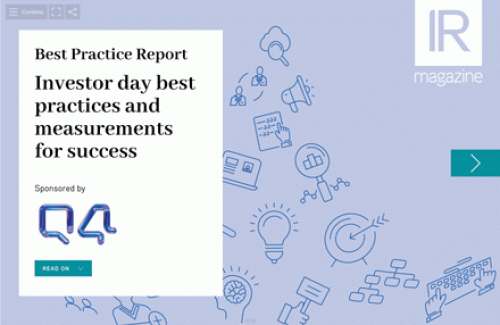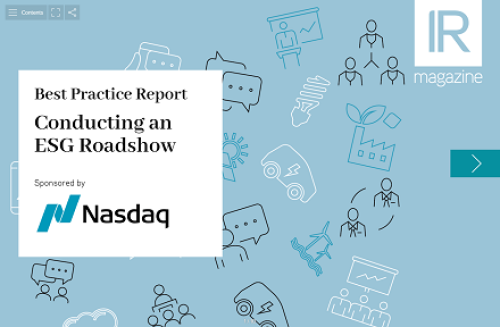Sponsored content
During the last several years, off-season engagement has increased significantly. It used to be that investors and issuers would discuss governance issues during proxy season, and those conversations related to items on the ballot. But as large institutional investors have continued to expand their investment stewardship teams, it has created a demand for greater engagement on ESG issues outside of proxy season.
The Covid-19 pandemic brought ‘social’ issues to the foreground as investors sought assurances from public companies that they were taking the necessary steps to ensure employee safety and cyber-security as workforces adjusted to working remotely on personal servers. But as next year’s proxy season begins to loom large on the horizon, traditional issues like executive compensation and board composition are also being cast in a new light. In this context, it’s imperative to engage with your top shareholders to understand what their views are on ESG matters.
How many companies participate?
Almost two thirds (63 percent) of respondents to a recent IR Magazine survey say they plan to participate in off-season governance engagements this year. This is especially the case at large-cap companies, where 78 percent of respondents say they plan to participate. At small-cap companies, the share is considerably lower (59 percent).
In the same survey, investors were asked who initiates off-season engagement. More than a third (37 percent) of investors say they mainly initiate the off-season meetings with their portfolio companies, 27 percent say engagements are normally initiated by the company and 31 percent say it’s an even split.
Jessica McDougall, vice president at BlackRock Investment Stewardship and Corporate Governance, recently told IR Magazine that she is responsible for proxy voting and engagement at 800 portfolio companies. As such, she initiates outreach to the issuers she feels the need to meet with during the off-season, and she says that – as of this year – this outreach is being co-ordinated through BlackRock’s internal corporate access team.
How does the engagement take place?
Globally, governance roadshows are the most popular form of off-season engagement, according to IR Magazine’s research – although only 22 percent of respondents say they have hosted a governance roadshow in the past.
Among respondents in Asia, a governance-focused webcast is the most popular form of off-season engagement – with 38 percent of respondents saying they have hosted one in the past. This is significantly higher than for respondents in North America and Europe, although companies like Hannon Armstrong and IBM have recently started hosting these ESG-focused investor webcasts.
Regardless of the format, the enforced adoption of virtual events due to Covid-19 provides an opportunity to increase off-season engagement this year. IR Magazine’s research shows that only one in five companies have an independent director participate in their off-season engagement, even though stewardship teams at institutional investors regularly say they want to meet with board directors.
By asking board directors to participate in select off-season shareholder meetings, it can give key investors an insight into the board’s thinking around ESG integration into corporate strategy.
How to reach out and drive results
While the volume of off-season engagement has increased in step with growing institutional stewardship teams in recent years, investors are still governed by a finite resource: their own time – as an example, McDougall, quoted above, is responsible for engagements with 800 portfolio companies.
This calls on IR teams to be efficient and compelling in their outreach to stewardship teams. In 2017 Rakhi Kumar, then head of ESG investment and asset stewardship at State Street Global Advisors, shared several tips for outreach with IR Magazine. She encouraged IR teams to visit the investor’s website first to understand what its published stewardship and engagement priorities are.
If you recognize a discrepancy with an investor’s policy on a certain issue, or are in a sector it is currently prioritizing for stewardship engagements, then tailor the outreach. ‘Say exactly what you’re looking to talk about in your email,’ Kumar suggested. ‘Often companies do not put in the context of why their message is important. If you don’t agree with us, feel free to explain why our approach doesn’t apply in your situation.’
This point is important because, as issuers have been encouraged to engage with investors during the off-season, the number of requests for meetings investors have received has also increased. By being specific and explaining why you want the meeting, you’re more likely to get a reply.
And the results can be significant: three quarters of buy-side respondents to IR Magazine’s research say off-season engagement leads to an improved relationship with the company, while 37 percent say it has a positive influence on proxy voting. In a year when so much has changed, and so much will continue to change, engaging with the stewardship teams at your top investors can be a powerful way to build trust and credibility. To learn more about engaging with these teams and how virtual events can help to strengthen your ESG value, please click here.










